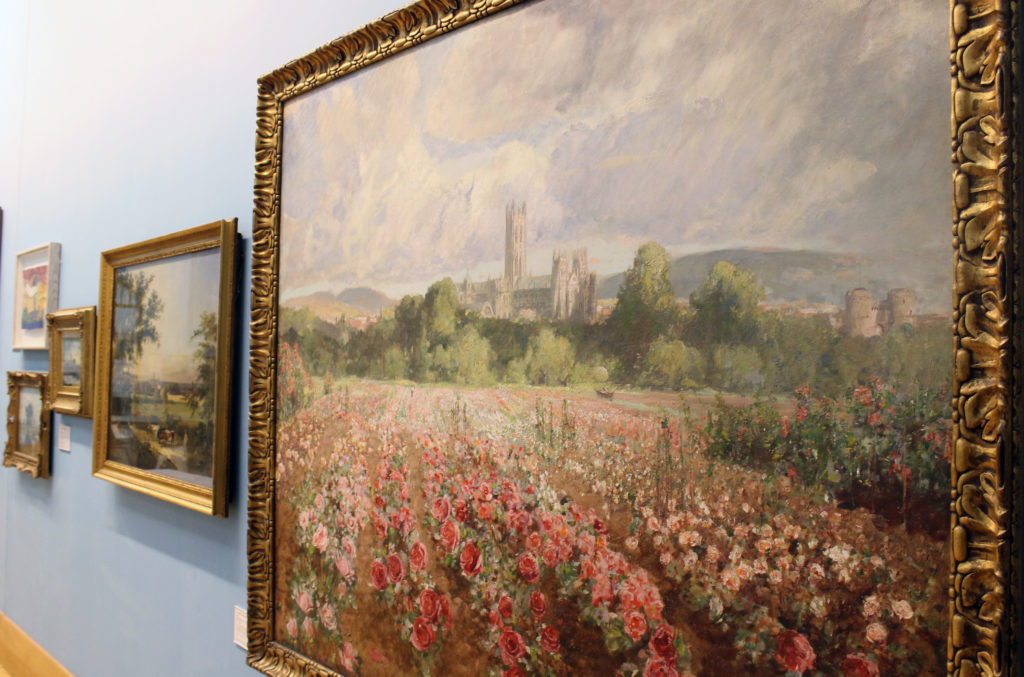
Easter fun at the museums!
Exhibitions, trails and activities; six fun things for all the family to enjoy at The Beaney and...
In the 1920s Canterbury resident Mary Tourtel was asked by the Daily Express to invent a children’s character for the newspaper. Her creation was the iconic, and much loved, Rupert Bear.
In 1970 ITV began transmitting an animated puppet version of Rupert for afternoon childrens’ viewing. Due to its popularity over the next 7 years the series reached more than 150 episodes!
Joseph Conrad (1857 – 1924), resident of the Canterbury area for a number of years, was a Polish author who wrote in English. Even though he was granted British nationality in 1886, he always considered himself a Pole. Despite this Conrad is regarded as one of the greatest novelists in English, though he did not speak the language fluently until he was in his twenties!
On 3 August 1924, Conrad died at his house in Bishopsbourne, probably of a heart attack. He was interred at Canterbury Cemetery under a misspelled version of his original Polish name, as “Joseph Teador Conrad Korzeniowski”. Inscribed on his gravestone are the lines from Edmund Spenser’s The Faerie Queene which he had chosen as the epigraph to his last complete novel, The Rover:
Sleep after toyle, port after stormie seas,
Ease after warre, death after life, doth greatly please
Geoffrey Chaucer (1343 – 1400), author of The Canterbury Tales, is known as the Father ofEnglish Literature and is widely considered the greatest English poet of the Middle Ages. He was also the first poet to be buried in Poets’ Corner at Westminster Abbey.
In 1324 John Chaucer, Geoffrey’s father, was kidnapped by an aunt in the hope of marrying the twelve-year-old boy to her daughter in an attempt to keep property in Ipswich. The aunt was imprisoned and a £250 fine levied, suggesting that the family were very well off.
Chaucer wrote in continental accentual-syllabic meter, a style which had developed since around the 12th century as an alternative to thealliterative Anglo-Saxon metre. Chaucer is known for metrical innovation, inventing the rhyme royal, and he was one of the first English poets to use the five-stress line, a decasyllabic cousin to the iambic pentameter.
Sir Thomas Wyatt(1503 – 1542) was a 16th century English ambassador and lyrical poet. Born at Allington Castle, near Maidstone, he is credited with introducing the sonnet into English literature. It has been suggested that the young, unhappily married Wyatt fell in love with the young Anne Boleyn in the 1520s. In May 1536 Wyatt was imprisoned in the Tower of London for allegedly committing adultery with her. Thankfully for him (but not so much for Anne Boleyn) he was released from the Tower later that year and returned to his duties.
On 2 April 1836, after a yearlong engagement, and between episodes two and three of The Pickwick Papers, Charles Dickens married Catherine Thomson Hogarth, and honeymooned in idyllic Chalk in Kent.
Charles Dickens spent Summer holidays at Bleak House in Broadstairs in the 1850s and 1860s and it was there in that “airy nest” above the harbour that he wrote perhaps his most meritous work, David Copperfield.
Canterbury Heritage Museum hosts a large display celebrating the life and works of Canterbury authors Mary Tourtel and Joseph Conrad. (The museum will reopen on Wednesday 25th March – Sunday 27th September, Wednesday – Sunday only 11-5pm)
For fans of #EnidBlyton books The Beaney House of Art and Knowledge is currently hosting ‘Mystery, Magic and Midnight Feasts: The many adventures of Enid Blyton’. Visitors will be able to drive Noddy’s car, ‘climb’ The Faraway Tree and see original transcripts of Enid Blyton’s books, alongside her famous typewriters and diaries.
